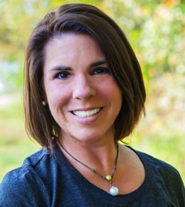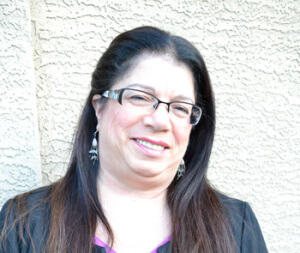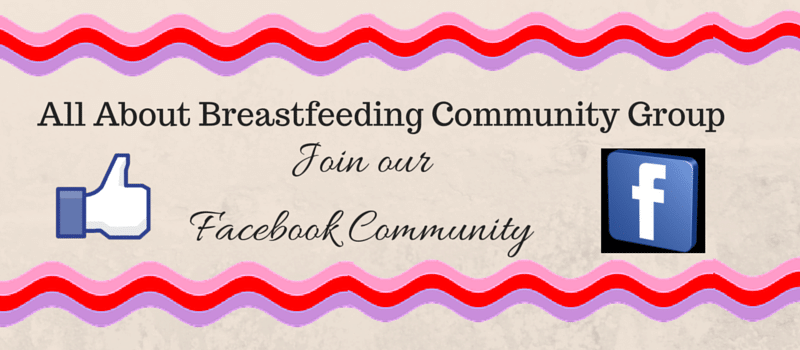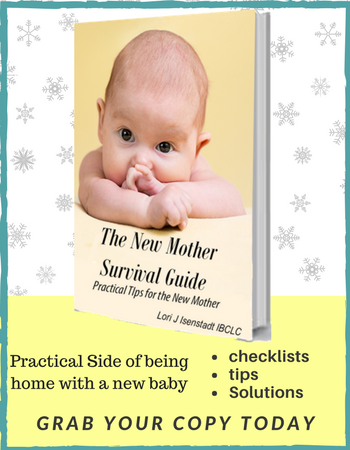
Today’s Podcast
episode 328
Listen Here Part 1
Listen Here Part 2
Welcome to All About Breastfeeding Podcast Page
Here You Will Find Access to All My Podcasts
Michale:
“In my practice, people come to me because they’ve seen everybody else. I am usually the last person they see. So my practice is diversified evenly between infants, toddlers, children and adults. So I see everyone equally. I don’t have a concentration of one age group.”
Her Story.
 My guest today is an active mother of 5 children as well as a home-birth, breastfeeding and natural parenting advocate who loves the beach, loves nutrition and healthy food, loves health and wellness education. She is a problem solver, studies biochemistry, physics, anatomy and physiology for fun and has a real passion to find new ways to normalize oral function and movement….. so that babies, children and adults may: breathe well, eat well, speak well and ultimately live well. I am excited to have Michale on the show so she can better help us understand how important it is to find the root cause of any feeding challenges that newborns, infants and toddlers have. I would like to first tell you about her impressive educational background she brings with her to this conversation
My guest today is an active mother of 5 children as well as a home-birth, breastfeeding and natural parenting advocate who loves the beach, loves nutrition and healthy food, loves health and wellness education. She is a problem solver, studies biochemistry, physics, anatomy and physiology for fun and has a real passion to find new ways to normalize oral function and movement….. so that babies, children and adults may: breathe well, eat well, speak well and ultimately live well. I am excited to have Michale on the show so she can better help us understand how important it is to find the root cause of any feeding challenges that newborns, infants and toddlers have. I would like to first tell you about her impressive educational background she brings with her to this conversation
Michale is the oldest of 2 children and she was born in Mississippi. Raised on the Mississippi Gulf, she enjoyed the beach in a wonderful sunlight filled, seafood laden childhood. One with great friends, great scenery and a wonderful beach and boat life. All this contributed to how well she did as a child given her oral dysfunction as well. She grew up playing the flute, marched in the school band, enjoyed high school, grew up and went to college. Michale talked about having some difficulty with the flute, however, she did not realize until her later years why she struggled. Once she had her release and tried playing the flute again, she realized how much easier it was to play.
Michale tells us how she came to work with babies and tethered ties:
She had her own personal experience. She suffered with 12 years of migraines, 9 days a month. She learned that her migraines were related to her swallow. These and other issues were alleviated when she had her myofunctional therapy and had her tongue tie release. This led her into the field of structural integration and working with the whole midline in the adult. At the time, she was married and living in Kansas. Her and her ex-husband opened up an Integrated Oral Function Practice. Together they started looking at the whole child (structurally) and how they used their mouth and how they used their body. They created a practice around this and began treating adults and children.
She was then challenged by her colleague, Jennifer Tow, who suggested she take a look at infants. Initially, she had no interest and felt she had no time for this. But her mind could not stop. She saw the same structural issues everywhere in children and adults. This led to her developing a way to care of these structural issues in the infant. In her husbands practice, tongue tie became not the focus, but was looked at as a symptom of this entire disorganization or structural dysfunction. The release of the tie became a vehicle or an access point to the whole system. They didn’t treat it as an entity or a diagnosis. It was merely a symptom of the whole child.
MIchale’s professional life in this field initially was working with children who were in braces, orthodontics, tongue thrust, open mouth posture and forward head posture. She helped adults who were in pain. This was her starting place and then worked backward to the infant.
Her children and early days of breastfeeding:
Michale has 5 children. She had 8 pregnancies, however, she lost 3. Her oldest is 25 and her youngest is 17 years old. She saw a lot of high risk birth in her training. This led her to say that she wanted nothing to do with epidurals. She resourced all she could find to help her with a natural birth which led her to the Bradley Method which she used for all 5 children. Her first was born in the hospital and she knew she was going to breastfeed. In nursing school she was not taught much at all about breastfeeding, in fact very little, she stated.
He was tied – this was 26 years ago and no one was looking into the oral cavity and evaluating for ties. She struggled with latch – her nipples were battered. She was told the classic – “keep going, it will get better.” All the while, she was bleeding, in pain and struggling. Eventually, he compensated and she breastfed for 9 months. He self weaned, went to the cup and table food. Now, as she looks back she can see restrictions and other structural issues in her son.
Her daughter was born 18 months later. At this point, Michale was a busy, overwhelmed mom. She had some of the same breastfeeding issues. Her daughter had an orthodontic journey which Michale is quite emotional about now. She desperately needed help and support but living in a small town, these services were just not available to her. Michale just didn’t know then what she knows now. She went on to have her third baby. Then she had her 4th child, who was tongue tied, but she did not know it at the time. By the time he was older, she knew what to look for. Once she realized her son was tongue tied, he had the tissue lasered by his Dad and had myofunctional therapy from Michale. Several of her children had to have their orthodontic work corrected by her husband. Michale talks about how difficult this was for her to watch her kids have to go through all this.
She continued her journey in this field with additional and on-going training. She has been innovative with developing an approach to the infant work she is now doing. Myofunctional therapy is not really designed for children under 3 years old. She had to make application and be innovative with the ways they began to train the musculature and help bring all that together so the children can eat, breathe and speak. Michale’s practice is with people coming to her when they have seen other practitioners. Her clients are diversified between infants, toddlers, children and adults.
What is tongue tie?
Michale feels like we have taken the word tie and applied it to the normal anatomical part of the body thats the fenum or oral frena. We have 7 oral frena. We have 3 on the top lip and 3 on the lower lip and one under the tongue. There are 7 attachments in the mouth that are anatomical parts that are considered normal. There is a range of normal. Within that range of presentation, something that is overly tight that inhibits the normal range of movement, we designate it as a tie. Because of the internet, everything is a tie now. You have to evaluate each piece in relationship to the whole and the movement and whats considered normal range of motion or optimal function. For something to be deemed a tie, it has to inhibit normal range of motion and normal function.
The problem is that many do not understand what normal range of motion is. Many don’t even know what is possible for movement in the oral facial complex anymore because we have normalized so much dysfunction. She thinks this is how we have missed generations of people who have a short lingual frena ( restricted oral frena)
Before doing a procedure you need to ask: What are the risks? What are the benefits? What do I stand to gain by doing this? Michale thinks the reason so many of the children are not doing well today after the revision, is because no one is looking at the child. They have not established what the deficit is and what is the outcome you are looking for? What are you going for?
We talked about her feelings about revisions being done without taking a look at the whole picture. What other work or therapy does this infant/child need in order for the revision to be successful. Will releasing this give us access to these bones, the chest – How are we going to open this system up so this child can be an optimal feeder?
Michale feels that the reason the outcomes that we are looking for is not happening is because the child is not being evaluated properly and thoroughly. The release gives the person who is doing the structural integration access to these other structures so that you can sync this body up with the brain.
Michale finds that nuchal chords and shoulder dystocia and other birth traumas are missed when evaluating the infant. This is important because it can affect breastfeeding. She shares a few stories to help us understand. The first one is about a 22 month old who had a release done, had a variety of other therapies done, however, would only breastfeed and had language regression, was not sleeping well and had sensory integration issues. Once Michale addressed her issues in just 2 sessions, she began talking and eating. Had she not had this work done there would have been life long health issues – a diagnosis of autism being a strong possibility.
Michale explains to us what the fascia is: It has recently been declared the largest organ in the body. It’s a network of fibers that is connected to every cell in our body. She calls it an antenna. It picks up information. It gives feedback into the body. It also sounds like the Chinese meridian system. The fascia is basically part of our nervous system.Tongue tie releases are just the very beginning.Take a good birth history any birth trauma help them work it out and the kid starts coming back online, they can now get them moving.
What would her suggestion be for a mom whose baby is having breastfeeding issues and has been told her baby is tongue tied.
She will start with: CFT – Fascial infant directed movement with that baby. I want that baby moving in organic ways. I want to address what is going on in the hips. If there is something going on in the hips, she goes straight to the feet and pelvis and continues working in the areas that she needs to in order to help release restrictions from the bottom up. She believes that this enables the presentation to change. It either becomes very clear that there actually is a tie or if it is a deep restriction. Something is going to change and it will become visible or come into the field. So, I will always start with CFT and then work with the baby at the breast. She likes to see the baby is moving their head in space. This helps her decide if the frenum needs to be released.
Her website:
Part 2
Michale tells us about her frenum release. She still has her frenum. It’s a lot less restricted, but you can still see it. She continues with her thoughts on the CFT that she provides: She states: With infants, eventually emerging out of the center is going to be this piece of tissue. We try to get that out of the way so we can get access to the deep mid-line, the other parts of the body and get that open, the neck moving better, the tongue up and then the body is going to put back something.
How can we help parents understand the need for combining body work therapy with the release? How can we talk to parents who are afraid of getting their babies treated?
She has produced a great video that addresses this. Her preference is to talk to parents about it in a way that they can best understand. Michale states that with other kinds of surgeries, such as hip replacement or rotator cuff surgery, you are referred to a physical therapist for continued care. The body needs to move and a tongue release is no different. Michale states that in her experience, if she can get babies moving prior to release – this lets the brain see what is possible and then get the release done. I like the phrase that she used during our interview – Let the hardware and the software sync up. The goal is the movement and she wants parents to avoid getting hung up on the tool ( chiropractic care or CST) and lose sight of what really needs to happen.
Does Michale feel the helmets are a good therapy for babies to have alone, or should they be combined with CFT, or should they be used at all.
The molding happens for various reasons. There are cranial strain patterns that are present. Even though you can manually change the head shape they are going to remain. The strain pattern is going to remain and it is going to show up in the occlusion. It’s going to show up in the shoulders, it’s going to show up in the shoulder. It’s going to show up in the hips. That molding happens for various reasons When you take scans of kids who have had these helmets, you can see the shape change in the cranium.She does not believe that the helmet is going to fully take care of this and it is not addressing the root cause.
What does she recommend to the mom who is in so much pain that she is going to be pumping and bottlefeeding, at least for the short term?
IBCLCs have access to more training so they can be first responder in these situations. Depending on their licensure and training they may be able to offer some initial help and then refer to another practitioner who has skills they don’t have.
IBCLCs need to create their local network for what they have available.
Parents always want to know how long the correction will take. What do you tell them?
Michale states that she typically will see an infant about 6 times before they reach a new plateau. They keep in touch and go from there. The IBCLC who does not have the hands on skill set, will need to collaborate with other practitioners.
What do you feel about the post-operative care – the standard stretching exercises parents are given?:
Every body is a different body. Each child is going to respond differently There is not a recipe. She adjusts as things flow. Michale feels there is a problem with the word standard as she feels there is no standard. With regards to the stretching exercises Michale has parents keep their fingers out of the site. She works on full range of motion with all the areas. She checks in with parents within the first week, and it might even be weekly for a while. She modifies the movements based on feedback given.
How do you feel about second revisions?
She would like to “press the rewind button.” She looks at this through a different lens. The issue might not be a short, restricted frenum. The tongue is way down in the throat, it’s pulled way down to the mid-line and there are ways to get the body to produce the extension. Getting it done again may not produce the tongue up out of the mid-line because that is movement and nervous system related not frenum related. She is suggesting to not become focused on surgical procedure and to recognize that this is not the only part of the therapy that is needed.
What are your thoughts on buccal ties?
When she started working more with babies, she began to see toddlers who were “pocketing” food, not really chewing their food, smushing their food, pushing it around, slowly gaining weight – she found that the buccal ties were hanging up the jaw and keeping it pushed back. Once she suggested releasing this tissue, she saw bigger smiles, arches begin to flatten, jaws come forward, sleeping and eating better. The brain did not know that the mouth could move, until the mouth was free. Flagging buccal tied babies often have milk spilling out the sides of the mouth.
Do you see buccal ties by themselves?
She typically sees buccal ties with other ties.
Contacting Michale: michalechatham.com
Emailing her is the best way to reach her.

listen Now part 2
Lori J. Isenstadt, IBCLC
 Lori Jill Isenstadt, IBCLC is a huge breastfeeding supporter. She has spent much of her adult life working in the maternal health field. Once she became turned on to birth and became a childbirth educator, there was no stopping her love of working with families during their childbearing years. Lori became a Birth doula and a Postpartum doula and soon became a lactation consultant. She has been helping moms and babies with breastfeeding for over 25 years. Lori founded her private practice, All About Breastfeeding where she meets with moms one on one to help solve their breastfeeding challenges. She is an international speaker, book author and the host of the popular itunes podcast, All About Breastfeeding, the place where the girls hang out. You can reach Lori by email at: [email protected] or contact her via her website: allaboutbreastfeeding.biz/contact
Lori Jill Isenstadt, IBCLC is a huge breastfeeding supporter. She has spent much of her adult life working in the maternal health field. Once she became turned on to birth and became a childbirth educator, there was no stopping her love of working with families during their childbearing years. Lori became a Birth doula and a Postpartum doula and soon became a lactation consultant. She has been helping moms and babies with breastfeeding for over 25 years. Lori founded her private practice, All About Breastfeeding where she meets with moms one on one to help solve their breastfeeding challenges. She is an international speaker, book author and the host of the popular itunes podcast, All About Breastfeeding, the place where the girls hang out. You can reach Lori by email at: [email protected] or contact her via her website: allaboutbreastfeeding.biz/contact
Submit a comment
your email address will not be published










